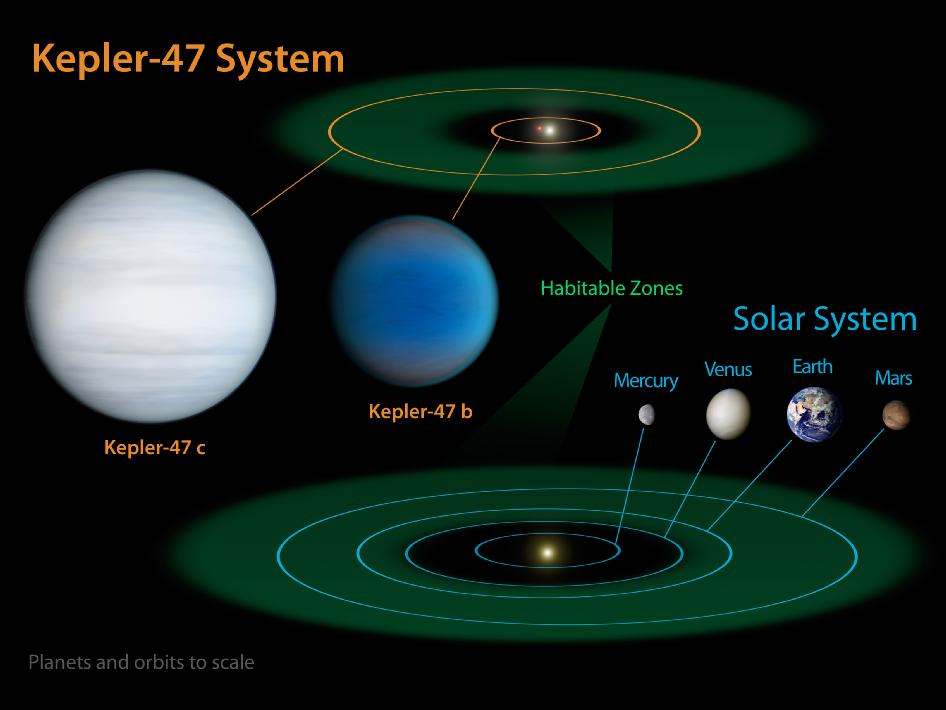NASA’s Kepler mission has discovered the first transiting circumbinary system — multiple planets orbiting two suns — 4,900 light-years from Earth, in the constellation Cygnus, proving that more than one planets can form and survive in orbit around a binary star. The inner planet, Kepler-47b, orbits the pair of stars in less than 50 days. It is thought to be a sweltering world, where the destruction of methane in its super-heated atmosphere might lead to a thick haze that could blanket the planet. At three times the radius of Earth, Kepler-47b is the smallest known transiting circumbinary planet. The outer planet, Kepler-47c, orbits its host pair every 303 days, placing it in the so-called “habitable zone,” the region in a planetary system where liquid water might exist on the surface of a planet. While not a world hospitable for life, Kepler-47c is thought to be a gaseous giant, slightly larger than Neptune, where an atmosphere of thick bright water clouds might exist. For more …

This diagram compares our own solar system to Kepler-47, a double-star system containing two planets, one orbiting in the so-called “habitable zone.” This is the sweet spot in a planetary system where liquid water might exist on the surface of a planet.
Unlike our own solar system, Kepler-47 is home to two stars. One star is similar to the sun in size, but only 84 percent as bright. The second star is diminutive, measuring only one-third the size of the sun and less than one percent as bright. As the stars are smaller than our sun, the systems habitable zone is closer in.
The habitable zone of the system is ring-shaped, centered on the larger star. As the primary star orbits the center of mass of the two stars every 7.5 days, the ring of the habitable zone moves around.
This artist’s rendering shows the planet comfortably orbiting within the habitable zone, similar to where Earth circles the sun. One year, or orbit, on Kepler-47c is 303 days. While not a world hospitable for life, Kepler-47c is thought to be a gaseous giant, slightly larger than Neptune, where an atmosphere of thick bright water-vapor clouds might exist.
The discovery demonstrates the diversity of planetary systems in our galaxy and provides more opportunities to search for life as we know it.
For more, visit: http://www.nasa.gov/mission_pages/kepler/news/kepler-47.html
Credit: NASA/JPL-Caltech/T. Pyle
